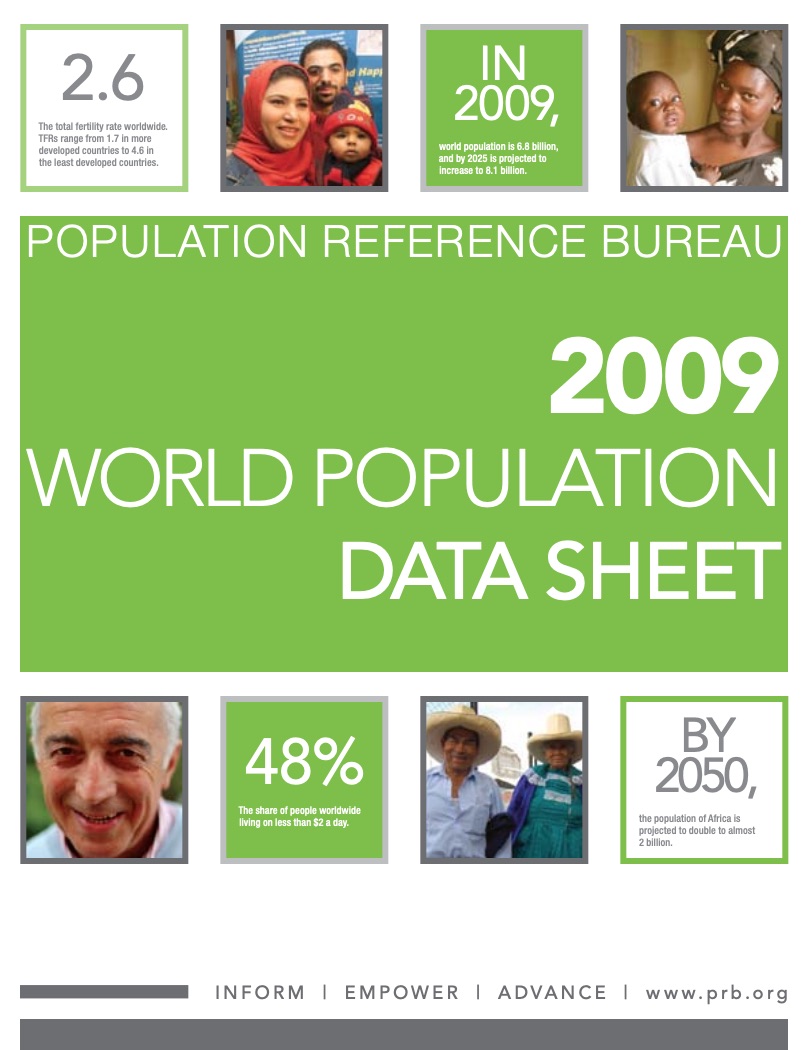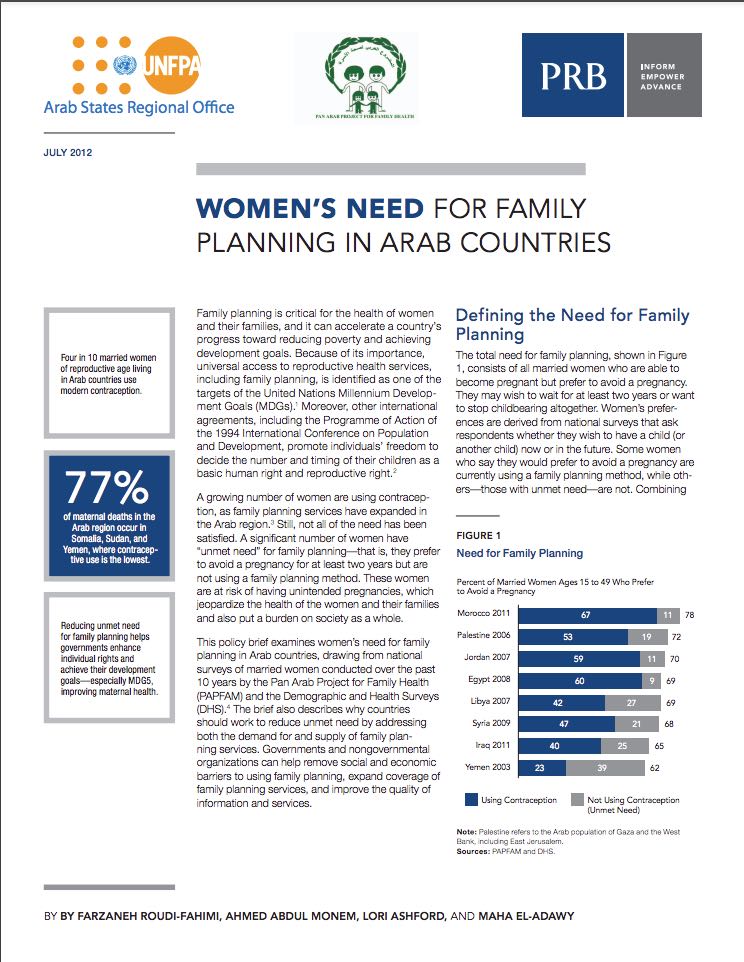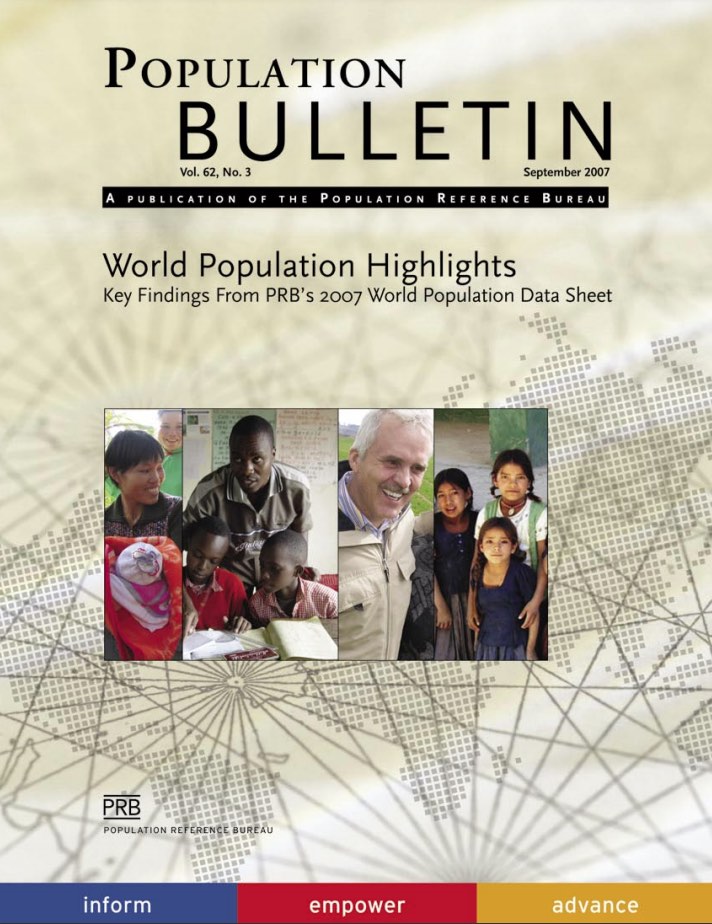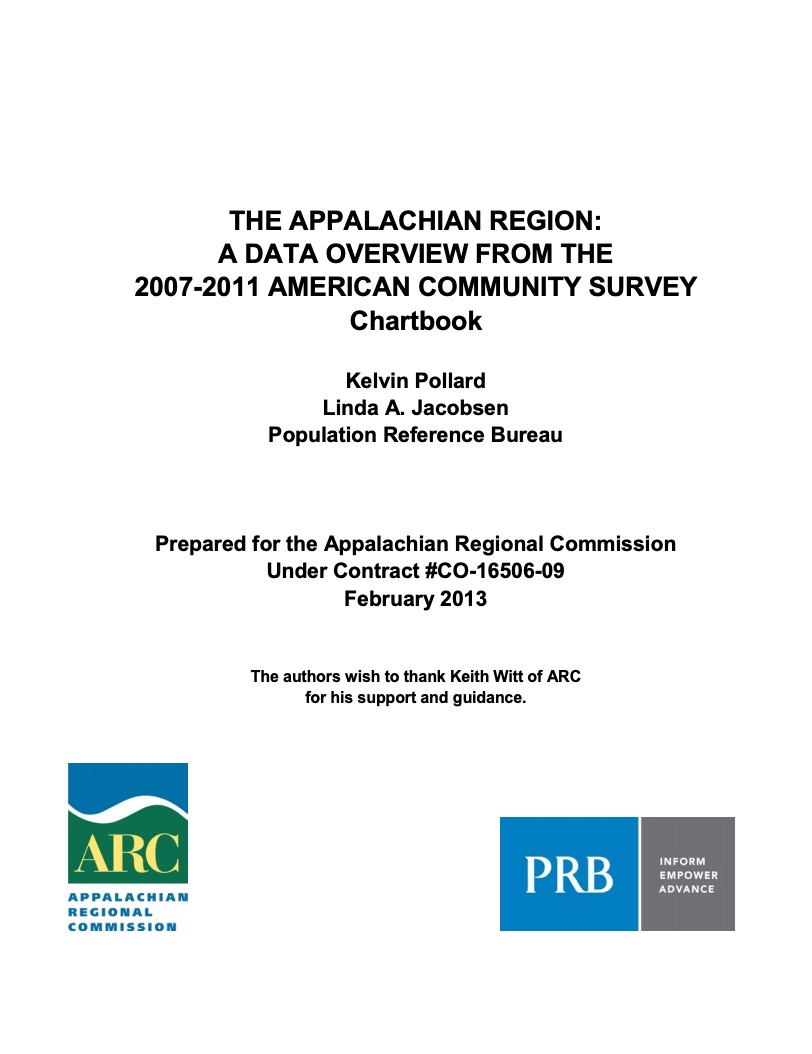2009 World Population Data Sheet
(2009) Global population numbers are on track to reach 7 billion in 2011, just 12 years after reaching 6 billion in 1999. Virtually all of the growth is in developing countries.

(2009) Global population numbers are on track to reach 7 billion in 2011, just 12 years after reaching 6 billion in 1999. Virtually all of the growth is in developing countries.

Family planning is critical for the health of women and their families, and it can accelerate a country's progress toward reducing poverty and achieving development goals. Because of its importance, universal access to reproductive health services, including family planning, is identified as one of the targets of the United Nations Millennium Development Goals (MDGs).

(2006)The Middle East and North Africa (MENA) region has experienced major improvements in health over the past few decades.1 Today, on average, a girl born in Egypt is expected to live for 72 years—nearly 20 years longer than if she had been born in the early 1970s—owing in large part to a 70 percent improvement in infant mortality rates over the same time period.
(2010) Female genital mutilation (FGM), also known as female genital cutting or female circumcision, is the cutting, altering, or injuring of any or all parts of the female genitalia for nonmedical purposes.
(2015) According to news reports, Nigerian parliamentarian Babatunde Gabriel Kolawole backed a proposed motion for population policy legislation with projections from PRB’s World Population Data Sheet as evidence of a brewing crisis and the need to take quick policy action to avert it.

Project: Appalachia: Demographic and Socioeconomic Trends
(2013) Appalachia's residents remain older, less educated, and less racially diverse than the United States as a whole, but those demographic and socioeconomic patterns vary widely within the region, according to The Appalachian Region: A Data Overview From the 2007-2011 American Community Survey, prepared by the Population Reference Bureau for the Appalachian Regional Commission.